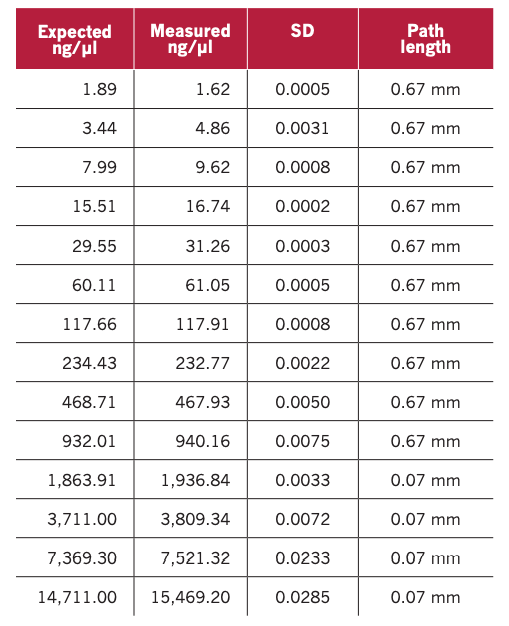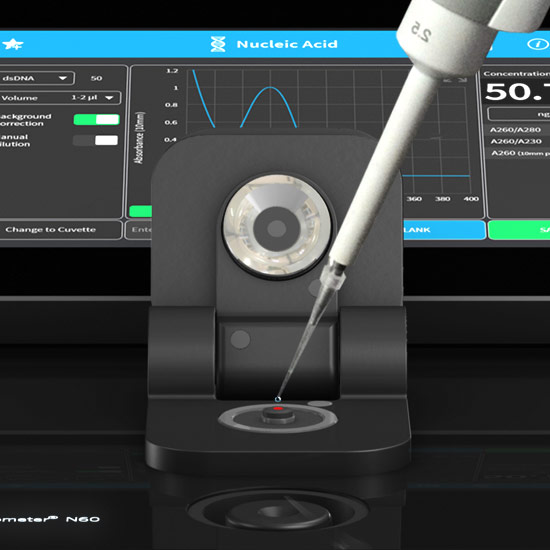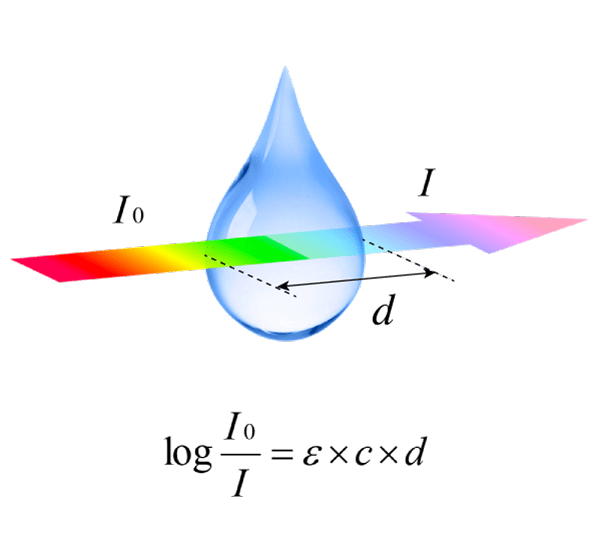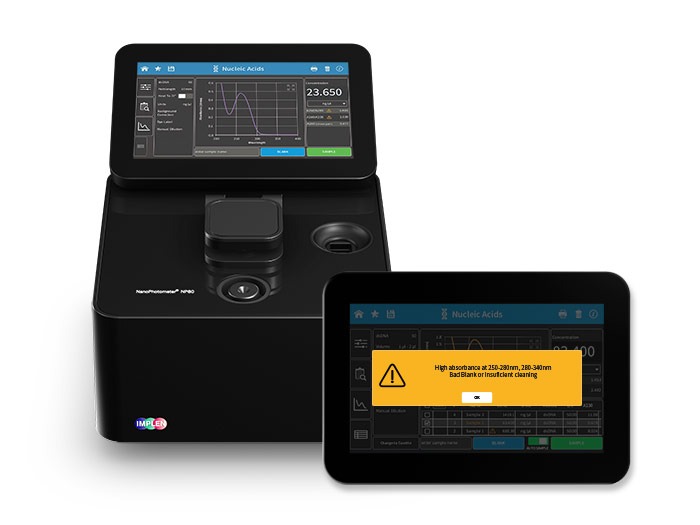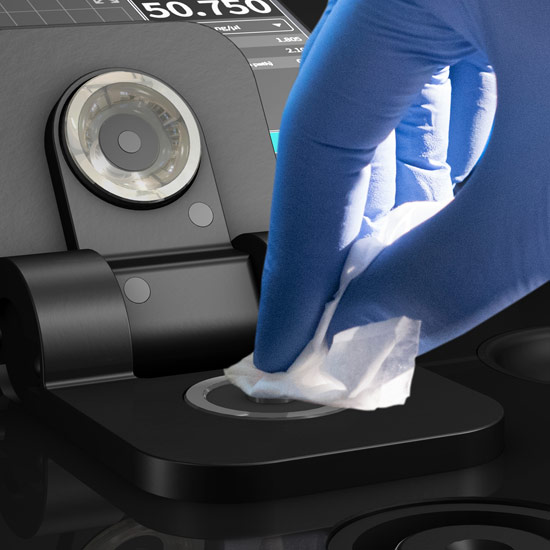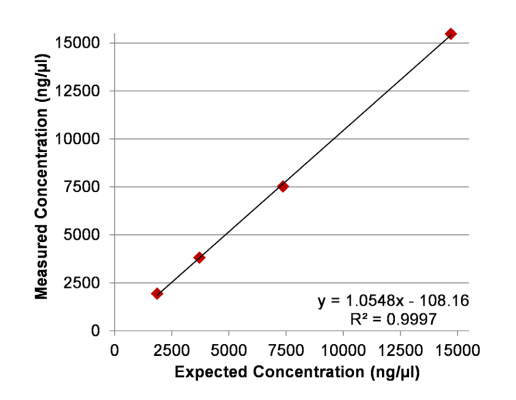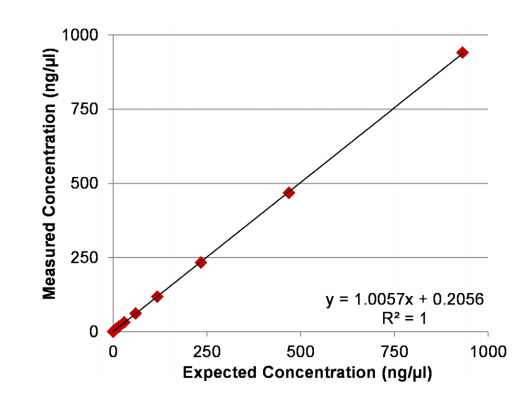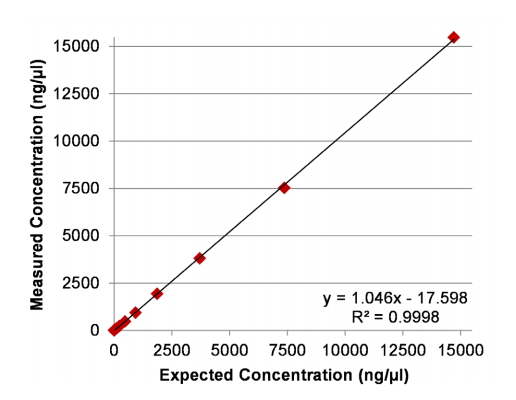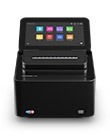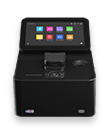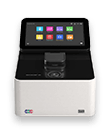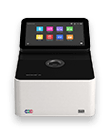“Best small volume spec on the market”
Rating: 5.0 ★★★★★
Application Area: Protein/nucleic acid quantitation
“The Implen NanoPhotometer N50 is extremely easy to use (intuitive menus and settings), accurate, and genuinely capable of measuring very small volumes repeatably. The touch screen works well even with gloves. Window configurations are adaptable so you can customize the information you’re looking at while working. The instrument is light and mobile, and since it’s all-in-one, you can literally move it to where you’re working as needed. It’s not stuck in a particular corner of the lab. In my opinion, it’s the best nano-scale measurement device on the market for routine lab sample quantification and spectral reading.”
David Rawling
Organization: Inflammatix, Inc., USA
“Easy use and accurate results “
Rating: 4.7 ★★★★★
“We are using it for nucleic acid quantification. It’s so easy to use, gives accurate results and easy to save data in an organized way. Would recommend it.”
Dr. Assala Samad
Organization: University of Oxford, United Kingdom
“Small but excellent”
Rating: 5.0 ★★★★★
Application Area: Gastroenterologie/Hepatologie, Medizinisches Forschungszentrum
“The N60 is an excellent product for determining concentrations of nucleic acids and proteins. Advantages include the accessibility of measured data, as the device exports measurements as .csv and .pdf files and that the device can be cleaned with 70% Ethanol and water. Plus, it contains an in-built vortexer.”
Dr. Sabrina Rüschenbaum
Organization: Universitätsklinikum Essen AöR, Germany
“Great accuracy of measurements, easy usage, really nice interface.”
Rating: 5.0 ★★★★★
Application Area: determination of the concentration of proteins and nucleic acids solutions
“C40 NanoPhotometer is a great tool to measure macromolecule concentrations in microvolumes. It surpasses our previous nanodrop machine as it does not need calibration and has more functions. Easy interface is a great advantage and the new function of enzyme kinetics together with vortex makes this small and handy tool a multitask help in our lab. The wi-fi functions enables us to print spectra quickly. Measurements are repeatable and accurate. I would recommend the equipment to every biochemistry lab.”
Joanna Sliwiak
Organization: Institute of Bioorganic Chemistry, Laboratory of Protein Engineering, USA
“Producto NP80-Touch”
Rating: 5.0 ★★★★★
Application Area: Biologia celular y desarrollo
Es un buen producto que facilita con rapidez y eficacia la medición de ácidos nucleicos y proteínas.”
Dr. Jesus Aguirre
Organization: Instituto de Fisiologia Celular, Mexico
